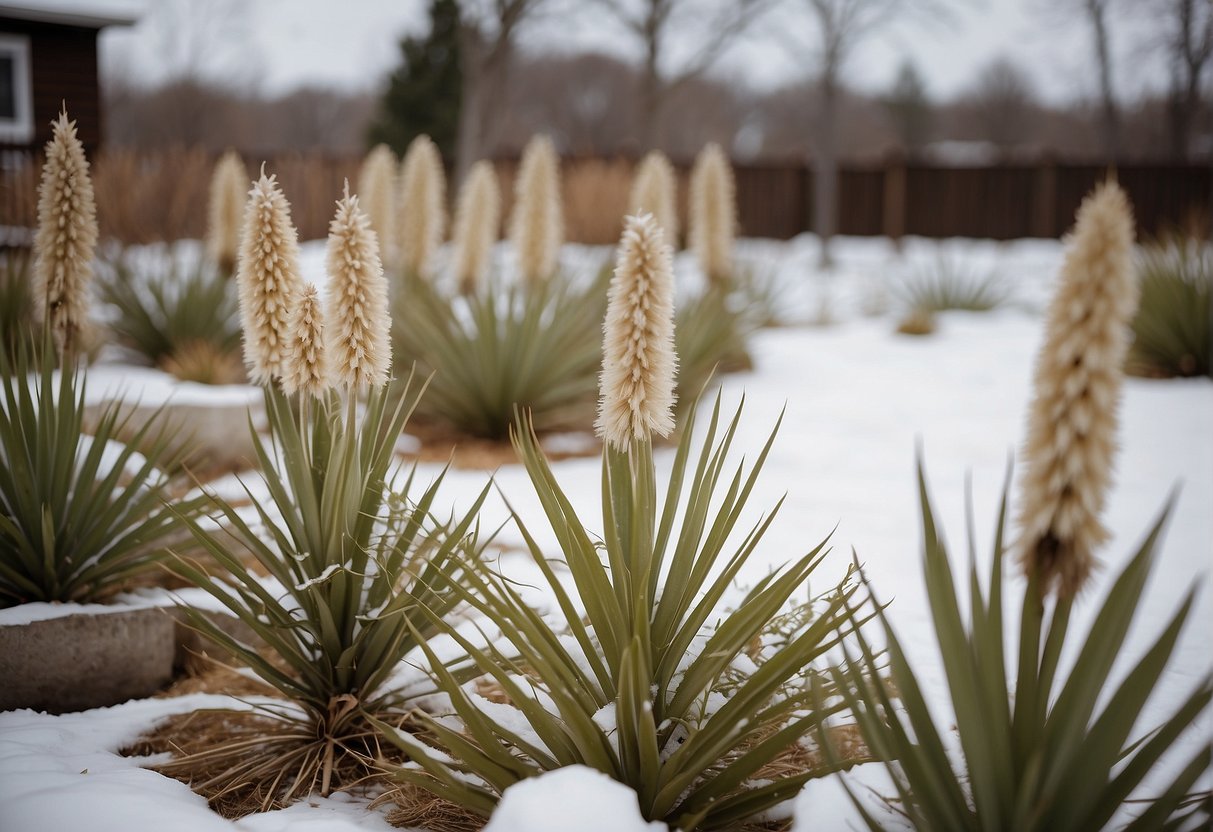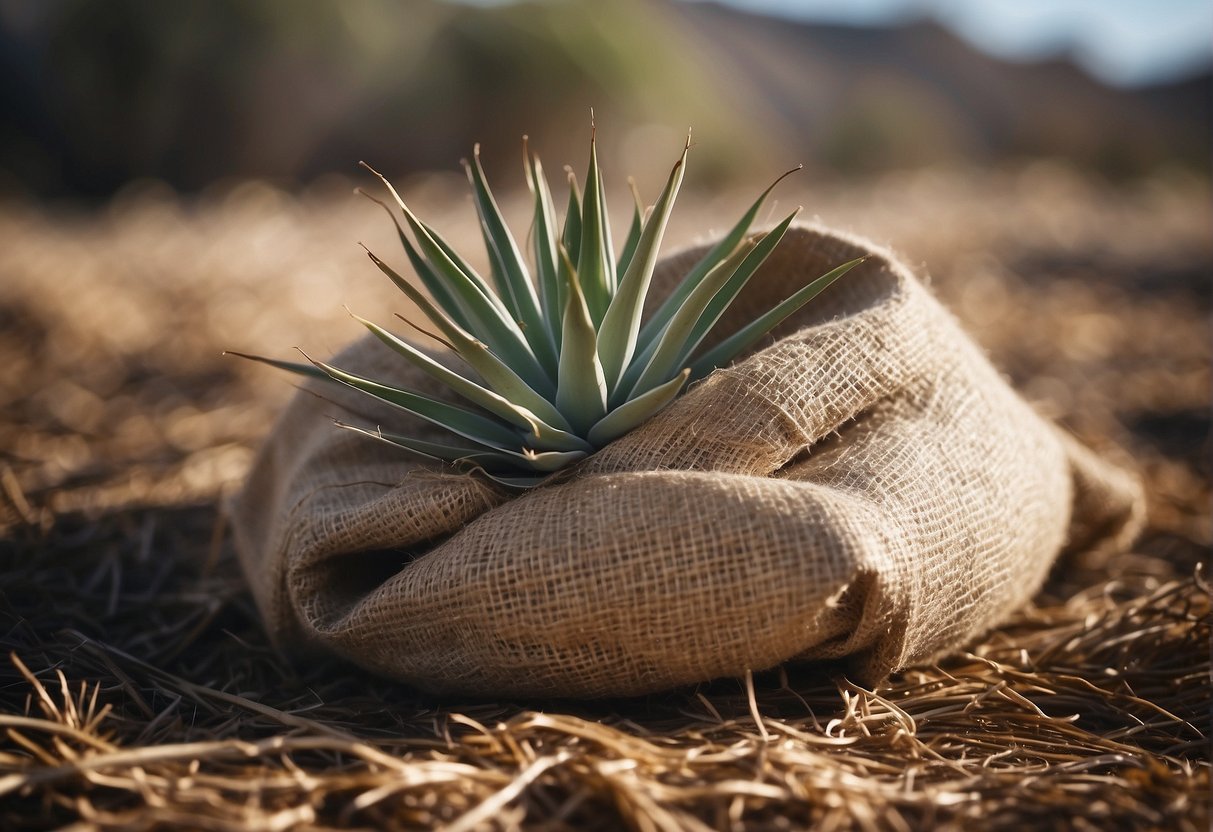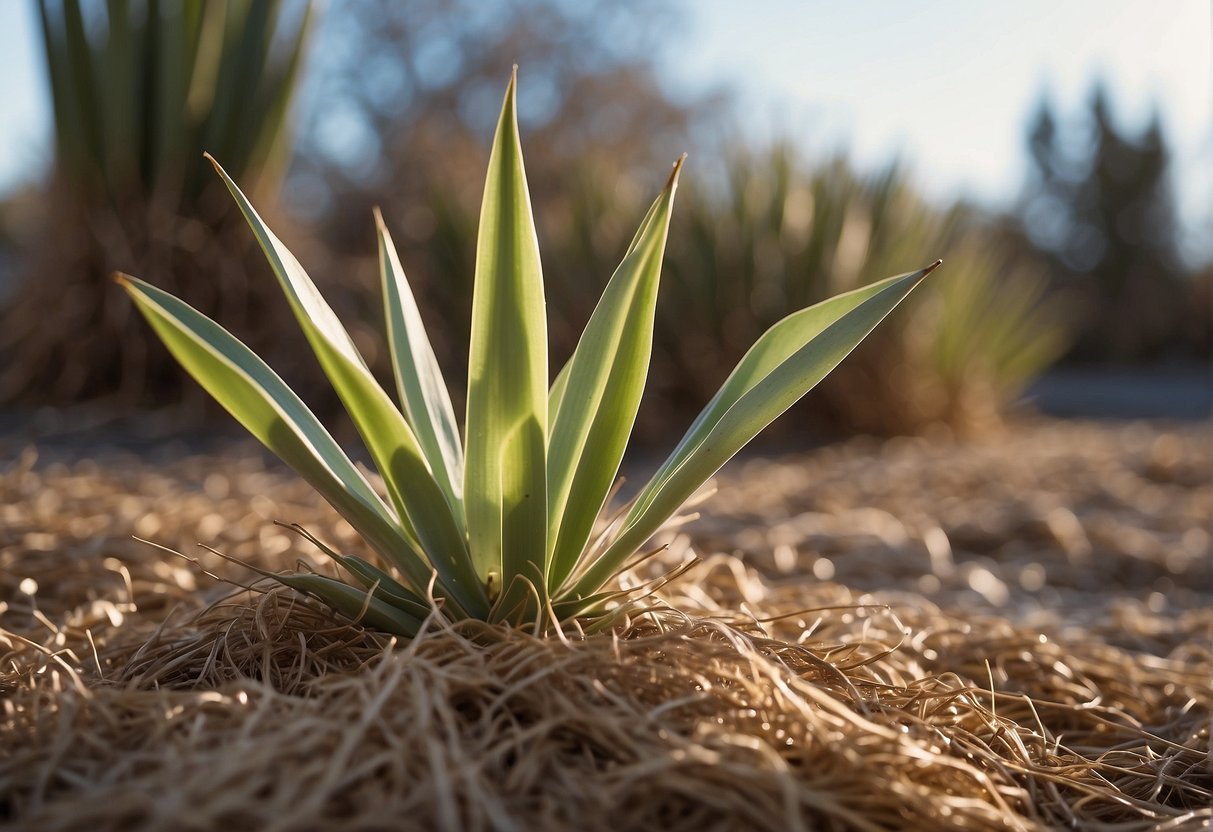How to Protect Yucca Plants in Winter: Tips and Tricks
Ensuring the safety and health of your cherished yucca plants throughout the winter is vital for maintaining their lifespan. While yucca plants are tough and hardy, they can still fall victim to the severe conditions of winter. Without the right precautions and care, there’s a risk your yucca plants could experience harm or potentially perish. In this piece, we’ll share insights on how to safeguard your yucca plants when the colder months arrive.

Preparing Yucca Plants for Winter
Before the winter months arrive, it’s important to prepare your yucca plants for the cold weather. One of the most critical steps is to stop fertilizing your yucca plants in the late summer or early fall. This will allow the plant to enter a dormant state and prepare for the winter months. Additionally, you should stop watering your yucca plants in the fall to prevent water from freezing and damaging the plant’s roots.
Winter Care and Maintenance
Once winter arrives, it’s time to take extra care of your yucca plants. One of the most important things you can do is to cover your yucca plants with burlap or a frost blanket. This will help to protect the plant from freezing temperatures and harsh winds. Additionally, you should remove any snow that accumulates on the plant to prevent it from weighing down the branches and causing damage.
Key Takeaways
- Proper preparation is key to protecting your yucca plants during the winter months.
- Covering your yucca plants with burlap or a frost blanket can help to protect them from freezing temperatures and harsh winds.
- Removing any snow that accumulates on the plant can prevent damage caused by the weight of the snow.
Preparing Yucca Plants for Winter
Winter can be a challenging time for yucca plants, especially in areas with cold winters or severe frost. However, with proper preparation, you can protect your yucca plants and ensure they survive the winter months. Here are some tips to help you prepare your yucca plants for winter.
Assessing the Environment
Before you start preparing your yucca plants for winter, it’s important to assess the environment they are in. This includes factors such as temperature, soil pH, sunlight exposure, and hardiness zones. Yucca plants are hardy in zones 5 to 11, so if you live in a colder zone, you may need to take extra precautions to protect your plants.
Protective Measures Against Frost
Frost can be especially damaging to yucca plants, causing leaves to turn brown and die. To protect your plants against frost, consider using a frost blanket or covering them with a tarp or blanket. You can also use insulation, such as straw or mulch, to protect the roots from freezing temperatures.
Watering and Moisture Control
During the winter months, it’s important to monitor the moisture level of the soil around your yucca plants. Yucca plants prefer dry soil, so be careful not to overwater them. However, if the soil becomes too dry, it can also damage the plant. To maintain the right moisture level, water your yucca plants sparingly and only when the soil is dry to the touch.
By following these tips, you can protect your yucca plants from frost damage and ensure they survive the winter months. Remember to assess your environment, take protective measures against frost, and monitor the moisture level of the soil. With proper care, your yucca plants can thrive even in the coldest of winters.
Winter Care and Maintenance

When winter arrives, it’s important to take extra care of your yucca plants to ensure they survive the cold temperatures. Here are some tips on how to protect your yucca plants during the winter months.
Pruning and Trimming
Before winter sets in, it’s a good idea to prune and trim your yucca plants. This will help to remove any dead or damaged leaves and flower stalks, which can attract pests and diseases. Use sharp pruning shears to cut back any dead or damaged leaves, making sure to cut them as close to the base of the plant as possible.
Fertilizing and Growth Management
During the winter months, yucca plants go dormant and don’t require as much water or fertilizer as they do during the growing season. However, it’s still important to fertilize your yucca plants to promote healthy growth and new growth in the spring. Use a balanced fertilizer with a ratio of 10-10-10 and apply it according to the package instructions.
In addition to fertilizing, it’s also important to manage the growth of your yucca plants during the winter months. Remove any new growth that appears on the plant, as it will be too weak to survive the cold temperatures. This will also help to conserve the plant’s energy and resources, allowing it to focus on surviving the winter.
By following these winter care and maintenance tips, you can ensure that your yucca plants survive the winter and come back strong and healthy in the spring. Remember to always wear gloves and protective clothing when gardening, and consult with a professional gardener if you have any questions or concerns.
Frequently Asked Questions

What are the best methods for insulating yucca plants during cold weather?
To protect your yucca plants during cold weather, you should cover them with blankets, burlap, or frost cloth. You can also use mulch to insulate the soil around the plant. Make sure that the covering is not too tight or heavy, as this can damage the plant. It’s also important to remove the covering during the day to prevent the plant from overheating.
How do I care for my indoor yucca plant during the winter months?
Indoor yucca plants require less water during the winter months, as they are in a dormant phase. You should also reduce the amount of fertilizer you give them. Keep them away from cold drafts and ensure they get enough sunlight.
What is the minimum temperature that yucca plants can endure without damage?
Most yucca plants can tolerate temperatures as low as 15°F (-9°C) without damage. However, this can vary depending on the species and the age of the plant. It’s best to research the specific needs of your yucca plant before exposing it to cold temperatures.
How should yucca plants be pruned in preparation for winter?
Prune any dead or damaged leaves or branches from your yucca plant before winter. This will help prevent disease and pests from spreading during the dormant phase. Avoid pruning healthy leaves or branches, as this can damage the plant.
Can yucca plants recover after being exposed to frost or freeze conditions?
Yucca plants can recover from frost or freeze conditions, but it depends on the severity and duration of the exposure. If the plant is severely damaged, it may not recover. It’s best to protect your yucca plant before cold weather arrives.
Are there any specific considerations for spineless yucca varieties in terms of cold resistance?
Spineless yucca varieties may be less cold-resistant than other species. It’s important to research the specific needs of your spineless yucca plant and take extra precautions to protect it during cold weather. Covering it with blankets or frost cloth and keeping it away from cold drafts can help prevent damage.

